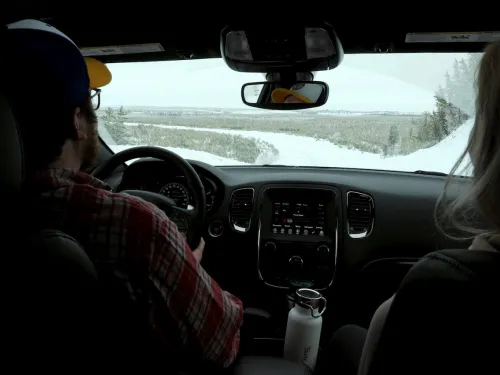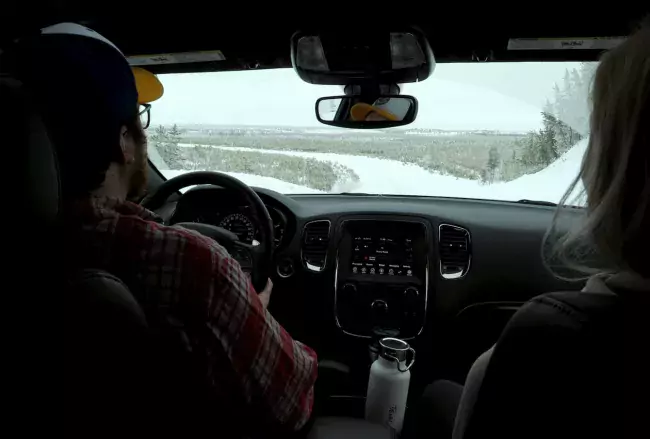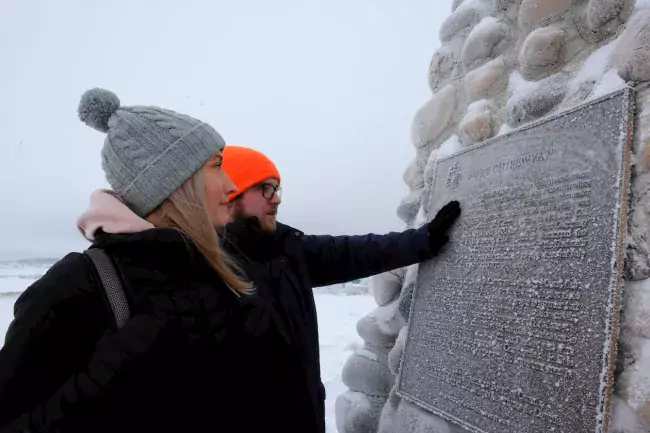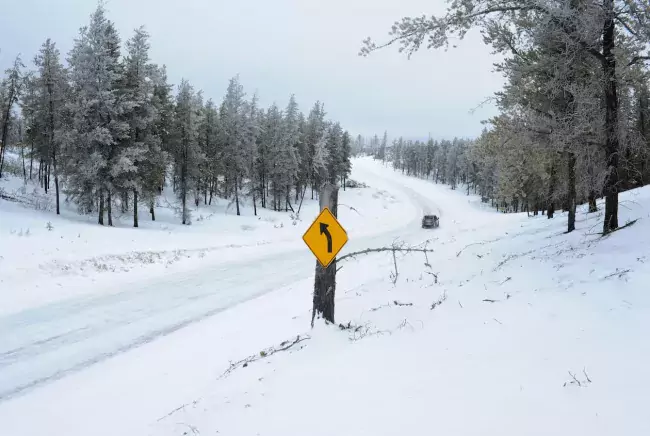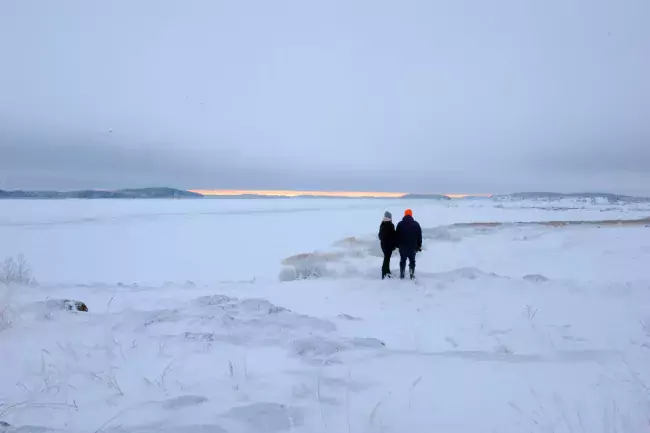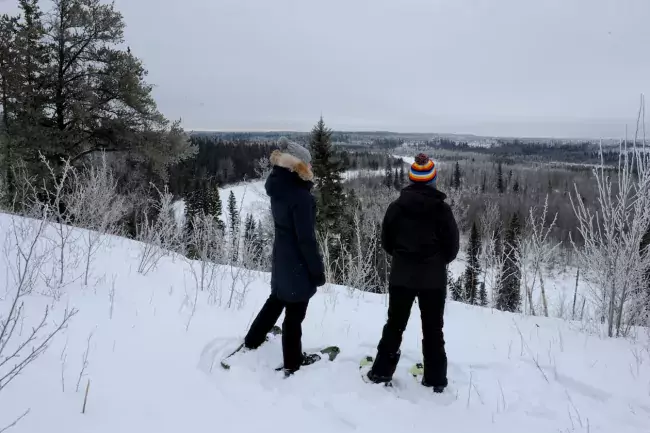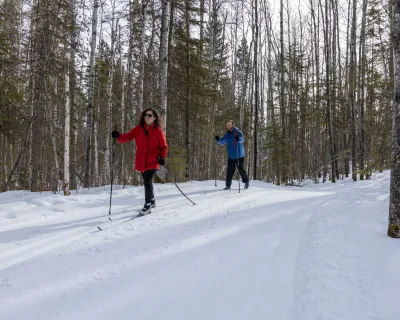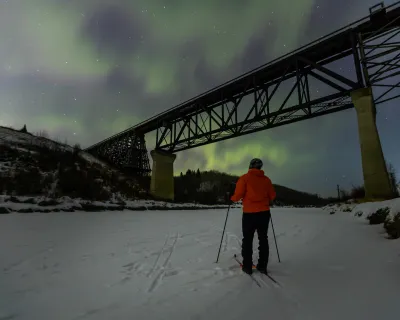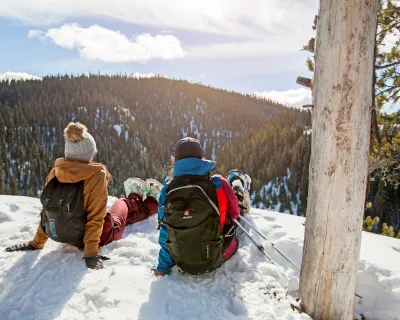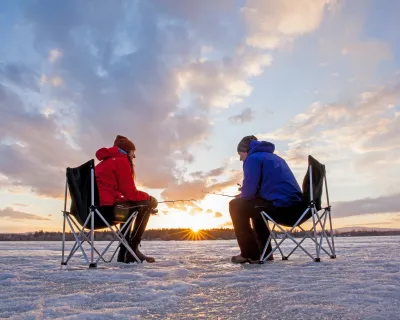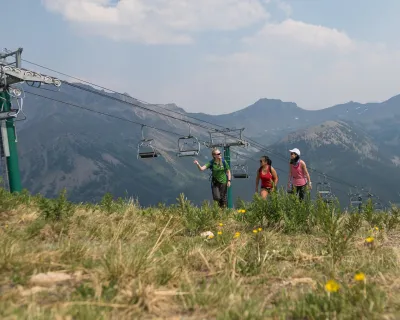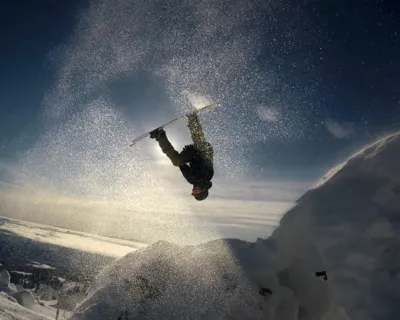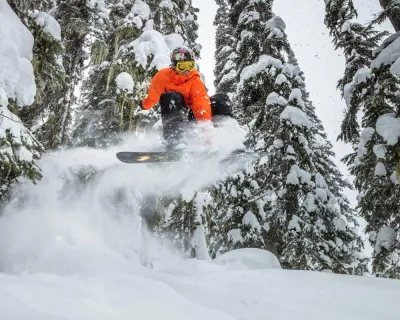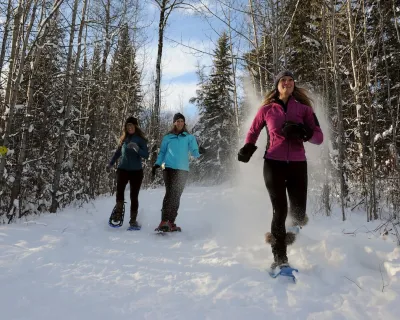
Expedition Ice Road Alberta
Alberta’s North is filled with winter experiences you should know more about. Why? #SkiNorthAB with us this season, search the tag and use it to show off what you find!
Making the winter passage from Fort McMurray to Fort Chip is a true northern adventure
A historic rock cairn, rimed and grey, looks out over Lake Athabasca. With her gloved hand, Hanna Bishop brushes the hoar shards from the bronze plaque, revealing the historic majesty of the Canadian north. Where we are standing is the spot on which stood the North West Company’s most important trading post, Fort Chipewyan, founded in 1788.
This is the pivot point around which spins our medicine wheel of impressions, a mental 360-degree timelapse chasing daylight over frosty tundra, car wheels spinning across frozen rivers, watching moose trudge through snowy stands of pine, ravens circling overhead, frosted willows lining the miles of uninhabited, icy delta.
Like many Fort McMurray residents, many Canadians for that matter, Hanna had never travelled north of town until this trip. Somewhere along the 280 kilometres of Winter Ice Road between Fort McMurray and Fort Chipewyan, she spots a fox, cocking its head, listening to the sounds of mice scurrying under the snow, its whole being concentrated on that fixed point.
Hit the road, Explore Wood Buffalo Social Media Channels.
Out here, nature’s dominion still prevails, ambivalent to our passages and our attempts to civilize.
Explorers and fur traders were the first Europeans to visit this area, by boat up the Athabasca River to Lake Athabasca. Up until about 35 years ago, that was one of only two ways to get to Fort Chip (the other being by plane).
It takes a lot of effort to build an ice road, which is remarkably like pavement.
In 1983, the idea of the Winter Ice Road was born, and Ross Campbell, group leader of the Ft. Chipewyan Metis Commercial Enterprises Corp., was at the centre of it from day one. After provincial funding came to help build the road in 1984, the efforts took hold and the next winter, construction commenced.
“In ‘85 we started slashing, brushing the road. It was a lot of hard work because it was all sand. There is no other road like this in the country, ” says Campbell, who now claims 29 seasons of ice road building and maintenance under his belt. “It requires a lot of hard work and good conditions to get a good ice cap on the road and make it like pavement like it was today when you came in.”
“Constructing ice bridges, you’re out there flooding 10 hours a day, - 40 sometimes and wind blowing. Crews cut the muskeg down, flattening it out. We need 30 inches of ice before we can get a grader out there.”
The history of Fort Chip goes back to the 1700s when it was a trading post of the North West Company.
Having winter access to the more developed reaches of the province hasn’t changed Fort Chip much, though. Life carries on much the same as it did. Ross and his nephew Craig mark time by the seasons. In fall, they hunt grouse. In winter, moose, and of course there’s ice fishing and trapping. In spring and summer, the wide expanse of Lake Athabasca beckons through the long days.
“It’s away from everybody else. There’s solitude up here. It’s nice and quiet... peaceful, safe,” says Campbell. “I was born and raised on the trapline. Especially in the winter, it means everything to me. Living off the land… it’s peace, it’s home, add Cambell of the area that is covered by the Treaty 8 Traditional Territory and Metis Historic Lands, both important historical events for the region.
The ice road is more than 500 kms long, connecting Fort Smith and Fort Chip to Fort McMurray and the rest of the province.
Travelling in the Canadian north today is not what it was back in the days of the early explorers, but it may be the closest thing you’ll find in the modern age. For over 200 kilometres, there is nothing but hinterland, frosted and impartial in its austere glory.
“What intrigued me most was the overall experience of this remote location,” reflects Bishop. “The different landscapes during the drive, and especially the view of Lake Athabasca from the top of the hill in Fort Chip were just spectacular.”
You don't mess with Mother Nature here. If you're travelling the winter road, it's good to be prepared with supplies for the adventure.
For a trip like this, it’s wise to prepare: bring extra food and water, extra fuel, a first-aid kit, blankets, fire-starting supplies, a road safety kit with shovels and fluorescent markers, and any other necessities. And of course, it’s good to budget plenty of time and let someone know where you’re going.
To some, that might sound ominous: to others, it is the first indication that a real adventure lies ahead. For the latter, the winter road is one of those unique experiences that won’t ever be forgotten.
When You Go
Learn more about the North on Explore Wood Buffalo's Facebook page.
Edmonton to Fort McMurray is about a four-hour drive, which includes travel on a new twinned highway. The Fort McMurray Airport has regularly scheduled flights from major carriers.
SnowSeekers asks you consider flight offsets if air is included in your itinerary.
Like this story? Make sure to Tweet it.
Learn more about what Northern Alberta has in store for you this winter by visiting our #SkiNorthAB page, where more stories and videos will be coming out all season long.
